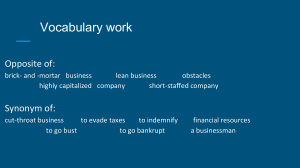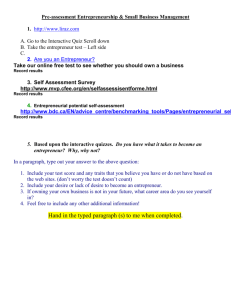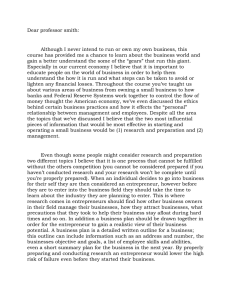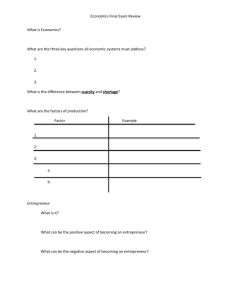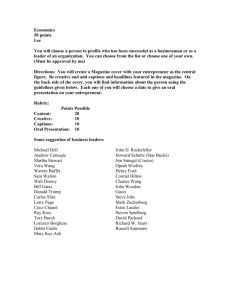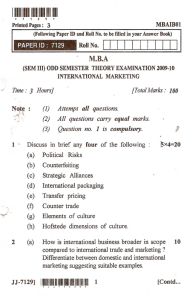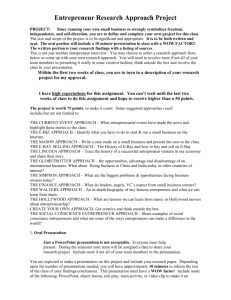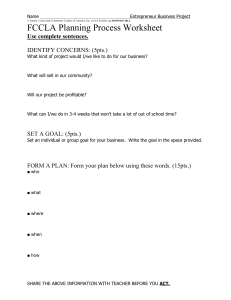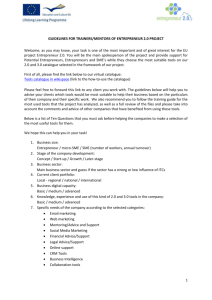Business plan template
advertisement
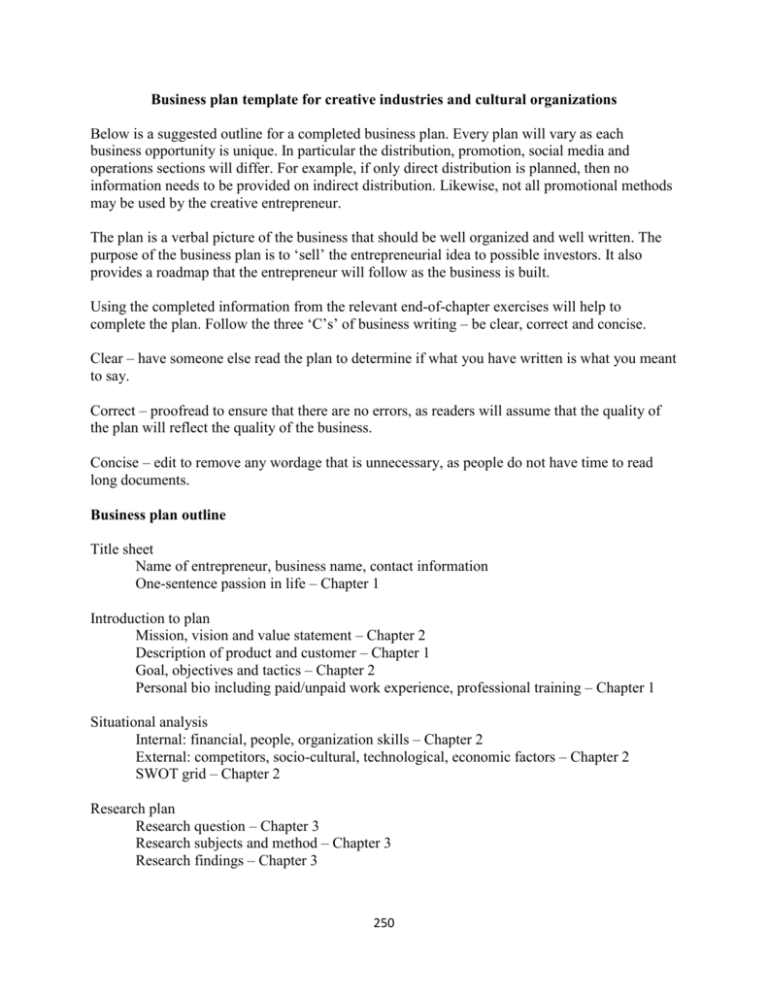
Business plan template for creative industries and cultural organizations Below is a suggested outline for a completed business plan. Every plan will vary as each business opportunity is unique. In particular the distribution, promotion, social media and operations sections will differ. For example, if only direct distribution is planned, then no information needs to be provided on indirect distribution. Likewise, not all promotional methods may be used by the creative entrepreneur. The plan is a verbal picture of the business that should be well organized and well written. The purpose of the business plan is to ‘sell’ the entrepreneurial idea to possible investors. It also provides a roadmap that the entrepreneur will follow as the business is built. Using the completed information from the relevant end-of-chapter exercises will help to complete the plan. Follow the three ‘C’s’ of business writing – be clear, correct and concise. Clear – have someone else read the plan to determine if what you have written is what you meant to say. Correct – proofread to ensure that there are no errors, as readers will assume that the quality of the plan will reflect the quality of the business. Concise – edit to remove any wordage that is unnecessary, as people do not have time to read long documents. Business plan outline Title sheet Name of entrepreneur, business name, contact information One-sentence passion in life – Chapter 1 Introduction to plan Mission, vision and value statement – Chapter 2 Description of product and customer – Chapter 1 Goal, objectives and tactics – Chapter 2 Personal bio including paid/unpaid work experience, professional training – Chapter 1 Situational analysis Internal: financial, people, organization skills – Chapter 2 External: competitors, socio-cultural, technological, economic factors – Chapter 2 SWOT grid – Chapter 2 Research plan Research question – Chapter 3 Research subjects and method – Chapter 3 Research findings – Chapter 3 250 Product description Product description – Chapter 4 Product benefits – Chapter 4 Competitive advantage – Chapter 4 Copyright protection – Chapter 12 Customers targeted Targeting strategy – Chapter 5 Target market segmentation description – Chapter 5 Benefits motivating purchase – Chapter 5 Financial standing Price structure – Chapter 6 Yearly revenue and profit projections – Chapter 6 Tax obligations – Chapter 12 Startup funding source – Chapter 6 Name of bank – Chapter 12 Pro forma financial statements – Chapter 10 Distribution plan Description of distribution strategy – Chapter 7 Direct distribution channels – Chapter 7 Method of payment processing – Chapter 10 Indirect distribution channels – Chapter 7 Alternative distribution methods – Chapter 11 Rent/lease arrangements – Chapter 12 Promotion plan Description of brand image – Chapter 8 Marketing message – Chapter 8 Plan for using advertising – Chapter 8 Plan for using sales promotions – Chapter 8 Plan for using networking for personal sales – Chapter 8 Plan for using public relations – Chapter 8 Social media plan Integrating traditional promotion into social media – Chapter 9 Types of social media utilized – Chapter 9 Posting calendar – Chapter 9 Operations plan Suppliers – Chapter 11 Production plan – Chapter 11 Employee job description – Chapter 12 Sources of employees – Chapter 12 Name of financial advisor, accountant, insurance company – Chapter 1 251

